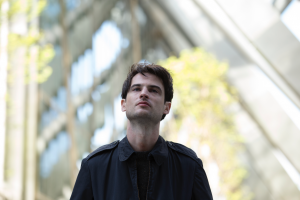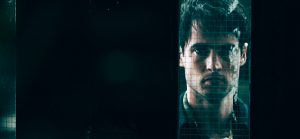Visual artist turned director Omer Fast makes his feature debut with Remainder, an adaptation of Tom McCarthy’s impactful novel of the same name. Here, he discusses the themes and challenges of telling the story…

OF: It’s a wonderful book. I think it speaks in many different ways about issues that I’m very interested in and that I’ve dealt with in other works. The protagonist has a catastrophic, traumatic accident, which leaves him as a blank slate and in dire need of rewiring his connections to the world. I’m particularly interested in that moment and the consequences, possibly and vacuum that’s created after a traumatic event like this and thinking about it as a potential for exploring our normal connections with society – rethinking those connections vis-a-vis the possibility for change. His manner of attempting to rediscover his identity and to reconnect with society is rather unique…
What can you tell us about Tom Sturridge’s character Tom?
OF: He embarks on a course of DIY therapy and rehab. Obviously the medical profession brings him back to life in a physical sense but is unable to reconnect him to life as a human being. So what he embarks on is a very idiosyncratic process of redefining his relationship to the world, to time and to the people around him. I think it parallels the artistic process – a process through which we question language, we question social conventions, relations, who we are and what we do and where we’re going. He’s returned to a world that he doesn’t completely grasp or recognise, so in the most fundamental way he has to recreate his position within it. That is what the film is about.
How does Tom go about fixing this difficult situation?
OF: He does it in a very antiquated way. He doesn’t go home and Google himself or reinvent himself as an avatar in social media. He’s quite un-technological after his accident: unconnected, disconnected from technology and the Internet. He’s much more concerned with real spaces and real bodies in a classical, almost romantic way.
Tom sets about re-staging his fragmented memories but memory is such a fragile, mutable thing…
OF: Absolutely. This character is engaging people and places in order to recreate his past and the more focused and the more obsessed he becomes in grasping at his past, the more elusive that past becomes. In the end, it’s not even the past that he’s recreating, it is his present of course. If there is a poetic dimension to his activity, it’s the elusiveness of one’s past and one’s memory, how fickle and impalpable they are.

OF: The novel has a very unique voice but we’re very much in the protagonist’s head and he talks quite a bit. For good or bad, I decided quite early on not to have a voice-over driven film, so there was always a very strong need to externalise his running interior monologue. The main thing is his action and production design plays a big role. He’s brought back to a particular environment which is disappointing to him, unsatisfactory and incomplete; he decides to augment that environment, to literally reshape it to whatever his memories, his whims, his impulses tell him.
What qualities do you feel you brought to the table with your video artist background?
OF: I am undisciplined, impulsive, chaotic, untrained, unprofessional… My practice is very often documentary-driven, or triggered by documentary. I think for me the notion that this character’s actions are impulsive and taking place in a particular space, in Brixton, and the consequences of his actions are very relevant. We see the people who move out of the building when he acquires it, empties it, and decides to re-stage aspects of his possible childhood. There’s a subtext there that relates to a bigger issue of gentrification. At the same time, I was also concerned with the notion that the story must maintain a poetic level which simple linear narrative cannot fulfill. This can sometimes feel a bit episodic perhaps but – for me – that’s the post-traumatic condition we’re describing, where life simply doesn’t connect all the smoothly anymore.
Being new to feature filmmaking, did you draw on any particular influences?
OF: One key difference between the novel and the film is the overall plot structure. Tom McCarthy’s novel is more linear than the film. I wanted to make the plot into a figure eight, which is actually hinted at at the very end of the novel when the protagonist commandeers a jet and has it fly around in circles. I suppose one very obvious reference for that would be Chris Marker’s La Jetée and thinking about the temporal aspects of the plot, and motivation vis-a-vis a circular narrative. One other influence I always had in mind was another French classic, Pickpocket. I asked Tom Sturridge to see it, because Pickpocket also has a protagonist who tries to reconnect with society in his own particular way, transgressing normal codes of interaction with others in order to – arguably perhaps – reach a more poetic understanding of things. I always felt that this was a beautiful reference. If there’s anything in Remainder that even comes close to that, I’d be extremely happy.
Remainder is showing at HOME from Fri 24 Jun.